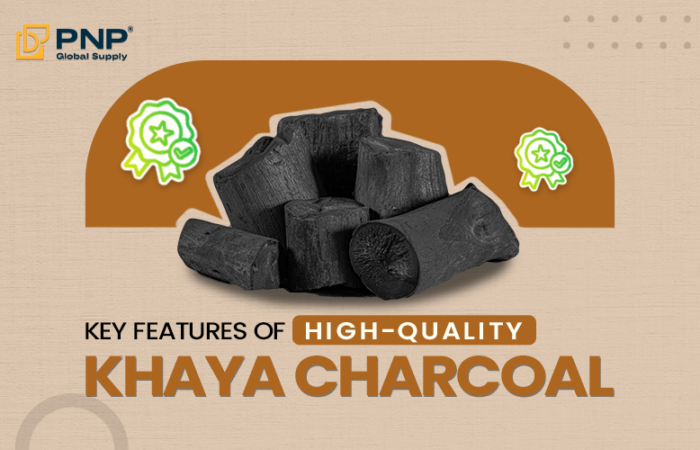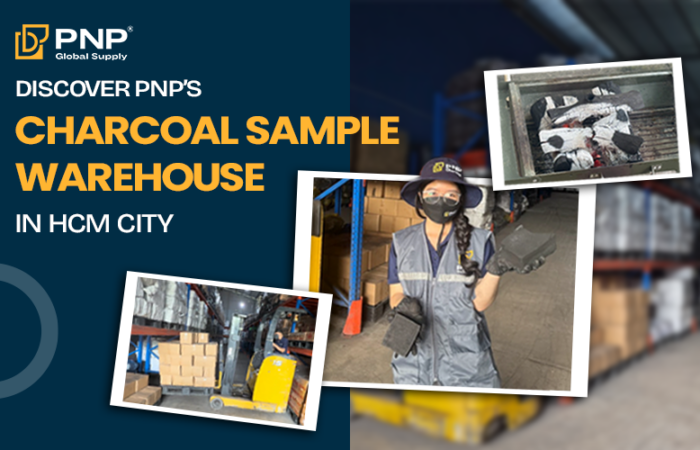When exporting charcoal 2024, choosing the right packaging and load capacity is crucial to ensure product quality and optimize shipping efficiency. The ideal packaging protects the charcoal from moisture and physical damage, while the load capacity should balance container space with weight constraints. By carefully considering these factors, exporters can enhance their product’s market appeal and minimize logistics costs, paving the way for successful international trade.
Introduction to the Charcoal Export 2024 Industry
The global demand for charcoal has seen consistent growth, driven by its wide range of uses, from household barbecuing to industrial fuel. As markets expand, especially in regions like the Middle East, Europe, and Asia, ensuring efficient and cost-effective shipping becomes crucial for exporters. One of the key aspects of charcoal export is understanding the packaging and load capacity, which can significantly impact profitability and customer satisfaction. This article delves into the intricacies of charcoal packaging, types of charcoal, and how to optimize load capacities for different international markets.
Understanding Charcoal Types
Charcoal is categorized into various types based on its raw materials, production methods, and intended uses. Here, PNP’ll explore three primary types—Kaya , Coffee , and Mangrove—each with its unique properties and packaging requirements.
1. Kaya Charcoal Export 2024
Kaya charcoal, derived from the Kaya tree, is known for its high-density and long-burning properties, making it a preferred choice for both household and industrial use. The demand for Kaya charcoal has been on the rise, particularly in markets where long-lasting heat is a priority, such as in professional grilling and industrial processes.
– Packaging: Kaya charcoal is typically available in 10kg or 20kg bags. The packaging material can vary from standard polypropylene (PP) bags to more durable polyethylene (PE) bags, depending on the market requirements.
– Load Capacity: When shipped in a 40ft container, Kaya charcoal generally achieves a load capacity of 20 tons. However, depending on the type of bag and how tightly the charcoal is packed, there is often room to add a few extra 20kg bags, potentially increasing the total load. This flexibility in loading is an advantage for maximizing shipment volumes and reducing per-unit shipping costs.

2. Coffee Charcoal Export 2024
Coffee charcoal is another popular variety, especially in regions where the cost is a significant factor for consumers. It is produced from coffee trees and has a distinct burning characteristic that some consumers prefer for specific culinary uses, such as smoking meats.
– Packaging: Similar to Kaya charcoal, Coffee charcoal is packaged in 10kg or 20kg bags. The choice of packaging is crucial as it influences both the load capacity and the charcoal’s protection during transit.
– Load Capacity: A 40ft container typically accommodates around 19.5 tons of Coffee charcoal. However, this figure can vary depending on the moisture content and quality of the charcoal, which can change based on production batches. It’s not uncommon for some shipments to exceed 19.5 tons if the charcoal is particularly dense or dry, allowing for a slightly higher load.

3. Mangrove Charcoal Export 2024
People know mangrove charcoal for its superior quality, especially its burning efficiency and heat output. Markets requiring charcoal with minimal smoke and consistent heat, such as high-end restaurants and industrial applications, highly seek it.
– Packaging: Mangrove charcoal is usually packed in 30kg bags. This larger bag size is typical for premium charcoals that are shipped in bulk to industrial users or large retailers.
– Load Capacity: The load capacity for Mangrove charcoal in a 40ft container ranges from 30 to 32 tons. However, this depends heavily on the specific port regulations at the destination. For example, in Taiwan, different ports have varying maximum tonnage regulations:
– Taichung & Kaohsiung: Up to 27 tons.
– Keelung: Up to 25.5 tons.
These regulations must be factored into the shipping process to ensure compliance and avoid penalties or delays at the destination port.

Factors Affecting Load Capacity in Charcoal Export 2024
Several factors can influence the load capacity of charcoal in a container. Understanding these factors is essential for optimizing shipments and ensuring that the maximum permissible load is achieved without compromising safety or compliance with regulations.
1. Packaging Type and Material
The choice of packaging—whether using cartons, PP bags, or PE bags—directly impacts how much charcoal can be loaded into a container. Each packaging type has different space and weight characteristics:
– Cartons: Provide better protection but take up more space, reducing the total load capacity.
– PP Bags: Commonly used due to their balance between durability and space efficiency.
– PE Bags: Offer superior moisture protection, which is critical for maintaining charcoal quality, especially during long transits.

2. Loading Method
The method of loading can also affect how much charcoal can be packed into a container. There are several methods:
– Palletized Loading: Pallets provide stability and make handling easier but take up more space, reducing load capacity.
– Non-Palletized Loading: Maximizes space usage by eliminating pallets, allowing for more bags or cartons to be loaded.
– Container Wall Lining: Adding lining to container walls can protect the charcoal from moisture and damage but may reduce the overall load capacity slightly.

3. Destination Port Regulations
Different ports have specific regulations regarding the maximum allowable weight of containers. These regulations are often in place to prevent overloading, which can cause damage to port equipment and increase the risk of accidents. Exporters must be aware of these regulations and plan their shipments accordingly.

4. Charcoal Quality and Moisture Content
The moisture content of the charcoal can significantly affect its weight. Charcoal with higher moisture content is heavier, which can reduce the total amount that can be loaded into a container. Conversely, very dry charcoal may allow for a slightly higher load. Regular quality checks and moisture content measurements are essential for ensuring that shipments meet the expected load capacities.
Maximizing Load Capacity: Strategies for Charcoal Exporters 2024
To optimize load capacities and ensure cost-effective shipments, exporters can employ several strategies:
1. Customized Packaging Solutions
Working with packaging suppliers to develop customized solutions can help maximize space efficiency. For example, using vacuum-sealed bags can reduce the volume of charcoal, allowing for more bags to be loaded into a container.
2. Load Optimization Software
Investing in load optimization software can help plan the most efficient way. Such as packing a container, taking into account the weight, size, and shaping of each bag or carton. This technology can identify the best loading pattern to maximize space usage and ensure that the container’s weight distribution is balanced.
3. Continuous Monitoring and Adjustment
Regularly monitoring the loading process and making adjustments as needed can help achieve optimal load capacity. For example, if a shipment is under the maximum allowable weight, additional bags can be added to maximize the load.
Conclusion
In the competitive world of charcoal export, understanding the nuances of packaging and load capacity is crucial for success. By carefully selecting the right packaging materials, optimizing loading methods, and staying informed about destination port regulations, exporters can maximize their shipment volumes, reduce costs, and enhance customer satisfaction.
As markets continue to grow and evolve, staying ahead of the competition requires a deep understanding of logistical factors. By applying the strategies outlined in this article, charcoal exporters can ensure their products reach their destination in optimal condition. This approach also maximizes load capacity.




